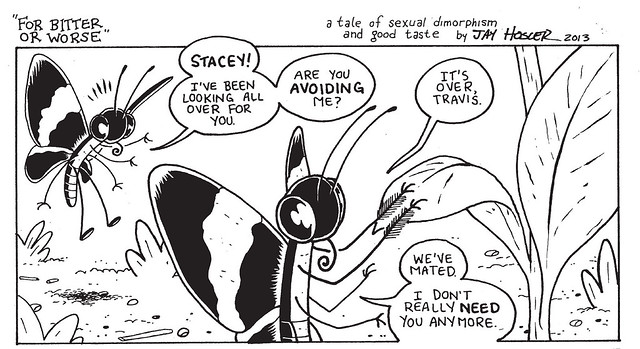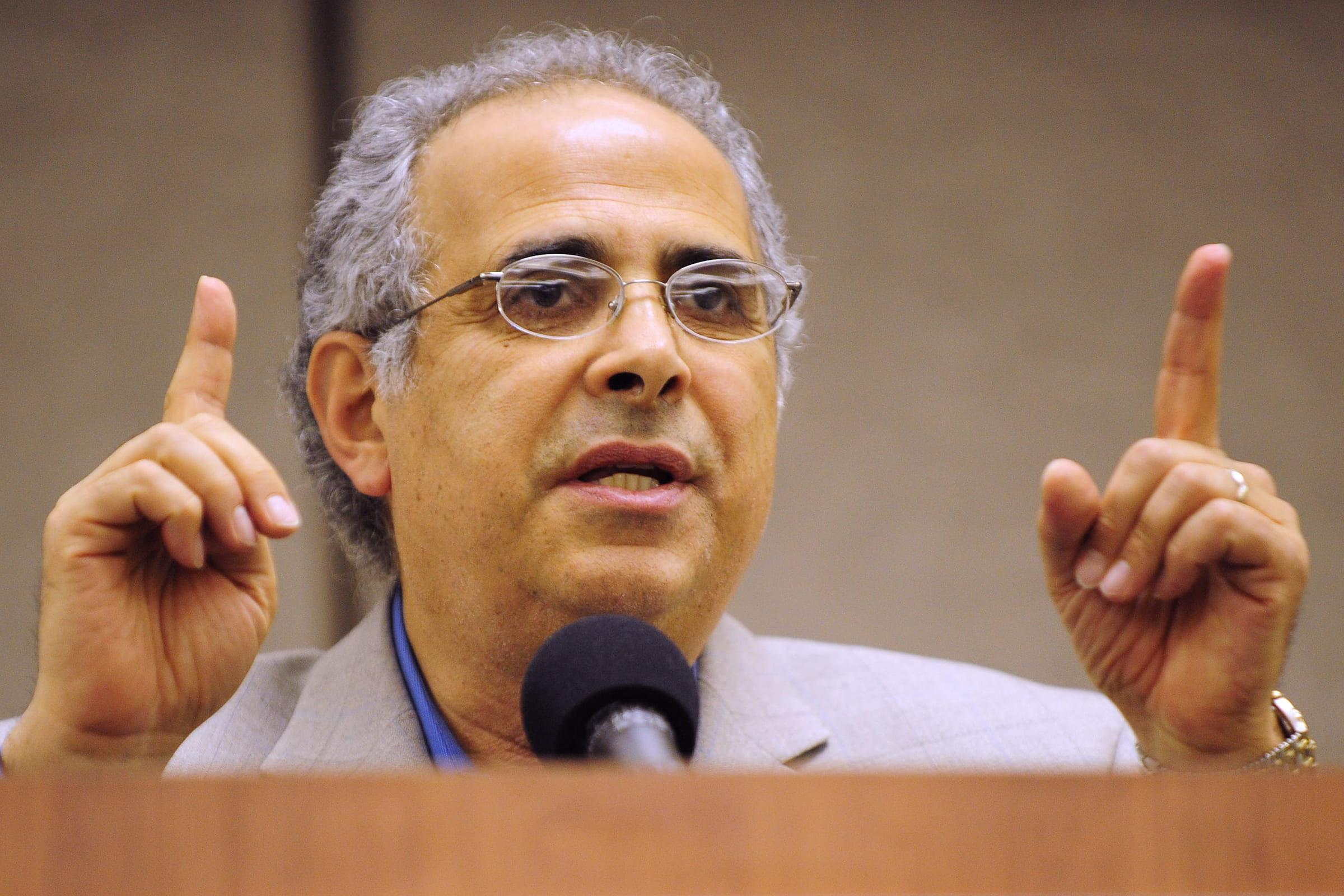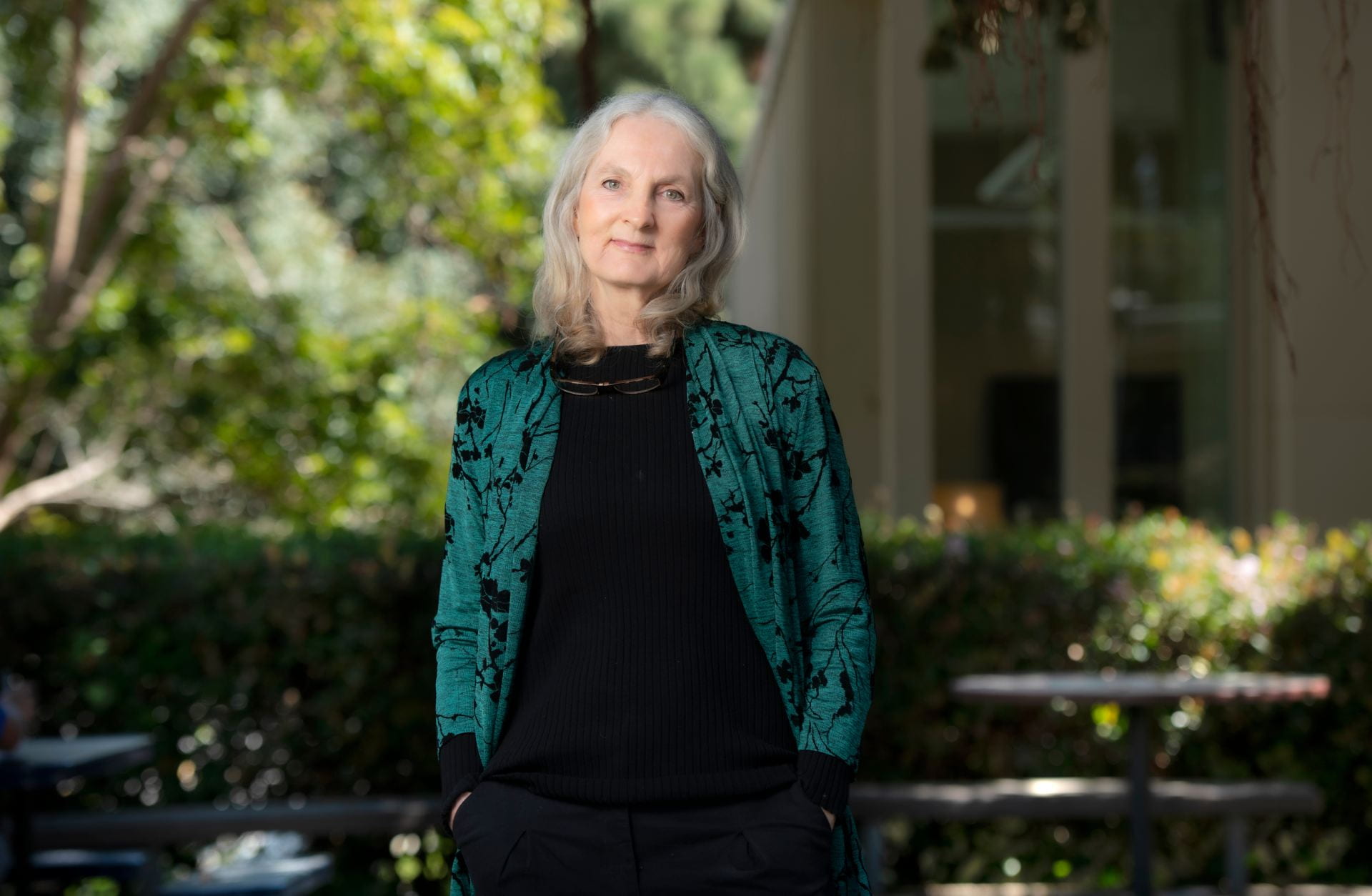‘Taste sensor' genes in female butterflies vital to species' survival, UCI study finds
Giving the phrase “Mother knows best” a whole new meaning, UC Irvine biologists have identified unique genes in female butterflies that enable them to select the best host plant for their larvae – and avoid deadly ones.

[Click to download full comic illustration (PDF)]
Irvine, Calif., July 11, 2013 — Giving the phrase “Mother knows best” a whole new meaning, UC Irvine researchers have identified unique genes in female butterflies that enable them to select the best host plant for their larvae – and avoid deadly ones.
Biologist Adriana Briscoe and colleagues found that females of the Heliconius species express gustatory, or taste, receptor genes when choosing a host on which to lay their eggs. Many plants defend themselves by producing toxic chemicals, so it’s vital to their larvae’s survival that the butterflies pick the right kind. Heliconius females have 80 taste organs called sensilla on their forelegs that they use to sample potential host plants, while male butterflies have none.
“This study is important for understanding the co-evolution of butterfly species and their host plants, uncovers a new set of genes critical to the species’ survival, and reveals that female butterfly behavior shapes the hereditary makeup of butterflies,” said Briscoe, professor of ecology & evolutionary biology and lead author of the paper, which will be published online July 11 in PLOS Genetics.
Heliconius females choose young, robust passionflower vines to host their larvae. They’re so selective that they inspect a number of vines multiple times daily for other butterfly larvae and deficient leaves that are not healthy enough to sustain larvae or produce toxic chemicals before deciding on which specific vine to lay their eggs. Healthy passionflower vines are a limited commodity indigenous to rainforests in Mexico, Central America and South America.
Briscoe and her team have published other studies on butterflies, including a 2010 one in which they found that butterfly species with a duplicate gene allowing them to see ultraviolet colors also have ultraviolet-yellow pigment on their wings, helping them identify appropriate mates in a timely manner.
Additional contributors to the current work were Aide Macias-Muñoz and Furong Yuan of UC Irvine; Chris D. Jiggins, Krzysztof M. Kozak, Gabriel A. Jamie and Simon H. Martin of the University of Cambridge; James R. Walters of Stanford University; Kanchon K. Dasmahapatra of England’s University of York; Laura C. Ferguson of the University of Oxford; James Mallet of Harvard University; and Emmanuelle Jacquin-Joly of France’s National Institute for Agricultural Research.
The study was supported in part by the National Science Foundation.
About the University of California, Irvine: Founded in 1965, UCI is a top-ranked university dedicated to research, scholarship and community service. Led by Chancellor Michael Drake since 2005, UCI is among the most dynamic campuses in the University of California system, with more than 28,000 undergraduate and graduate students, 1,100 faculty and 9,400 staff. Orange County’s second-largest employer, UCI contributes an annual economic impact of $4.3 billion. For more UCI news, visit wp.communications.uci.edu.
News Radio: UCI maintains on campus an ISDN line for conducting interviews with its faculty and experts. Use of this line is available for a fee to radio news programs/stations that wish to interview UCI faculty and experts. Use of the ISDN line is subject to availability and approval by the university.

